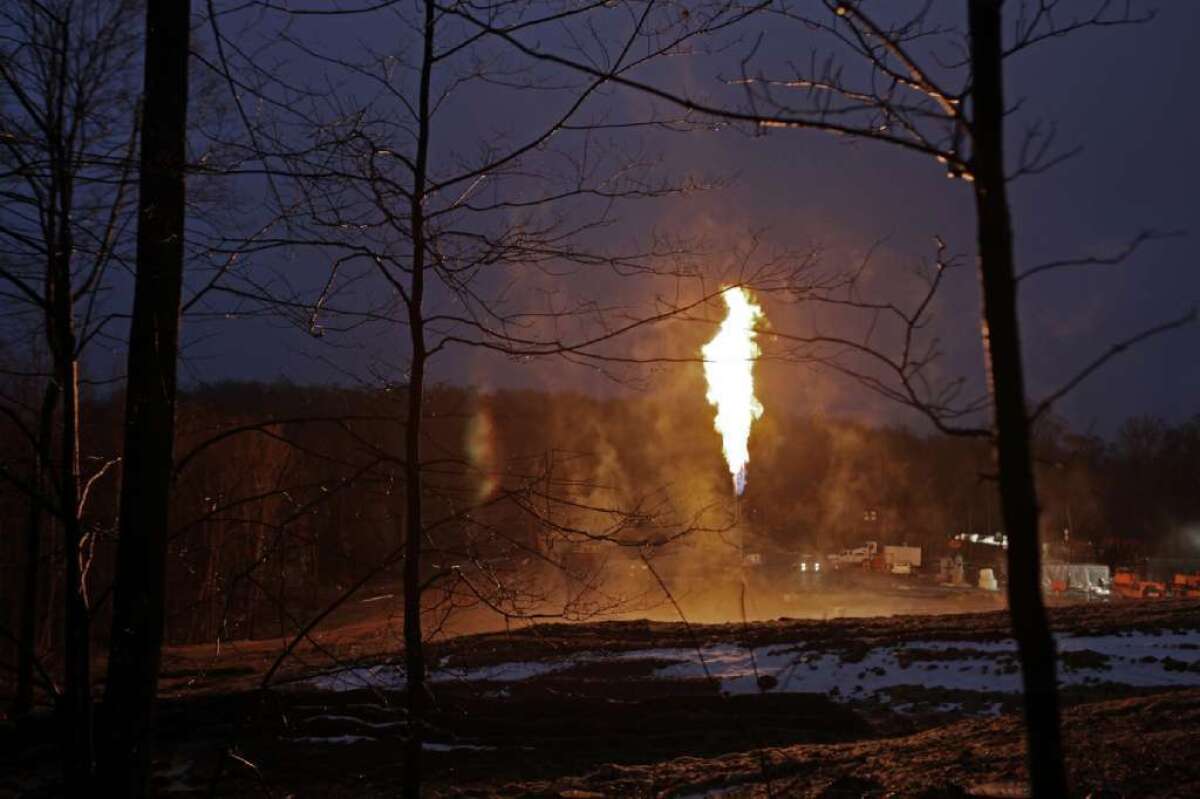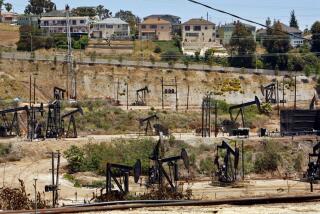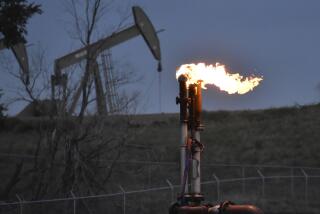U.S. oil and gas reserves up by a third, new report says

WASHINGTON -- Reserves of oil and gas that can be developed using current technology are 35% greater in 2013 than in 2011, according to a new report by the Energy Information Administration, the research branch of the Energy Department.
The rise in estimated domestic reserves to 223 billion barrels of oil equivalents, which include crude oil and gas, stems in large part from the inclusion of reserves found in shale formations. Increased use of production methods such as horizontal drilling and hydraulic fracturing, or fracking, have made oil and gas trapped in tight geological formations economically recoverable.
The United States is second to Russia in the amount of technically recoverable barrels of shale oil, at 58 billion. It is fourth among countries with reserves of technically recoverable shale gas reserves, with 665 trillion cubic feet. China has the largest shale gas reserves, 1,115 trillion cubic feet.
The Energy Information Administration said “32% of the total estimated natural gas resources are in shale formations, while 10% of estimated oil resources are in shale or tight formations.”
“Today’s report indicates a significant potential for international shale oil and shale gas, though the extent to which technically recoverable shale resources will prove to be economically recoverable is not yet clear,” EIA Administrator Adam Sieminski said.
The data bolster predictions that the U.S. will be able to decrease imports of fossil fuels as it ramps up domestic production, including oil in North Dakota and the Eagle Ford formation in Texas and natural gas in the Marcellus shale formation in western Pennsylvania.
But the energy boom has unlocked controversy along with opportunity. Dozens of communities around the country have passed limits on fracking because of concerns about possible air and water pollution and heavy truck traffic.
Fracking involves shooting water laced with chemicals and sand deep underground to shatter rock formations and tap deposits of oil and gas. Many communities have expressed worries that the process could lead to contamination of local water resources with fracking fluid or the migration of methane and other gases and minerals into water supplies.
ALSO:
Supreme Court orders new hearing for California raisin farmers
Judge rejects delay in Zimmerman’s trial in Trayvon Martin case
Man dies, four Boy Scouts rescued along Arizona-Nevada border
More to Read
Sign up for Essential California
The most important California stories and recommendations in your inbox every morning.
You may occasionally receive promotional content from the Los Angeles Times.











